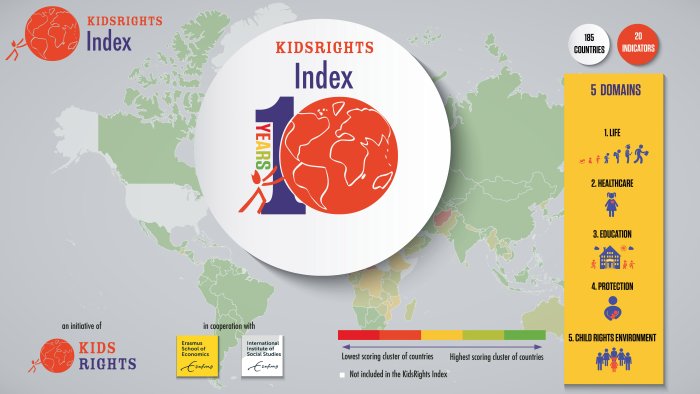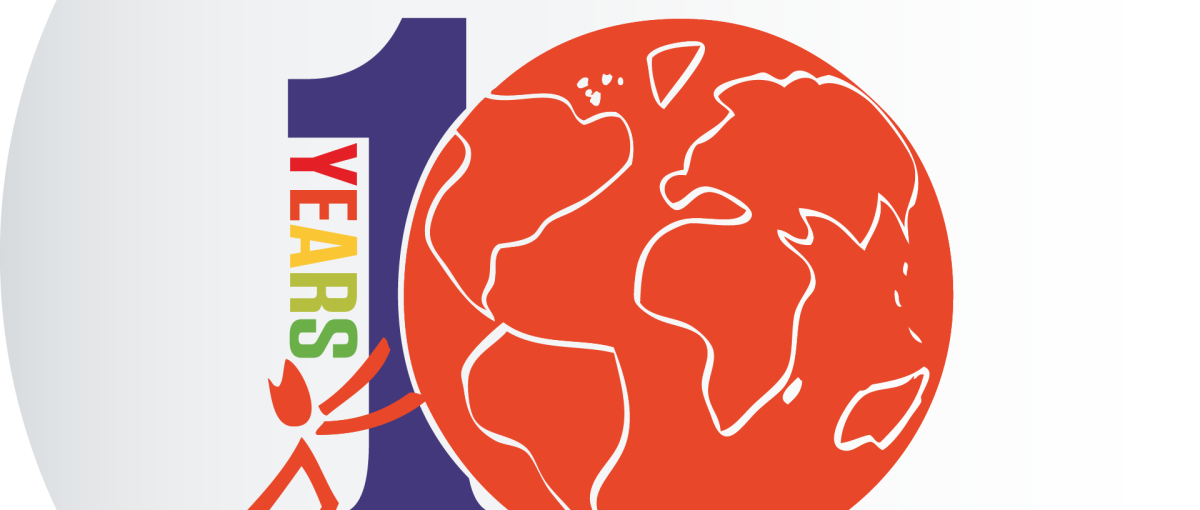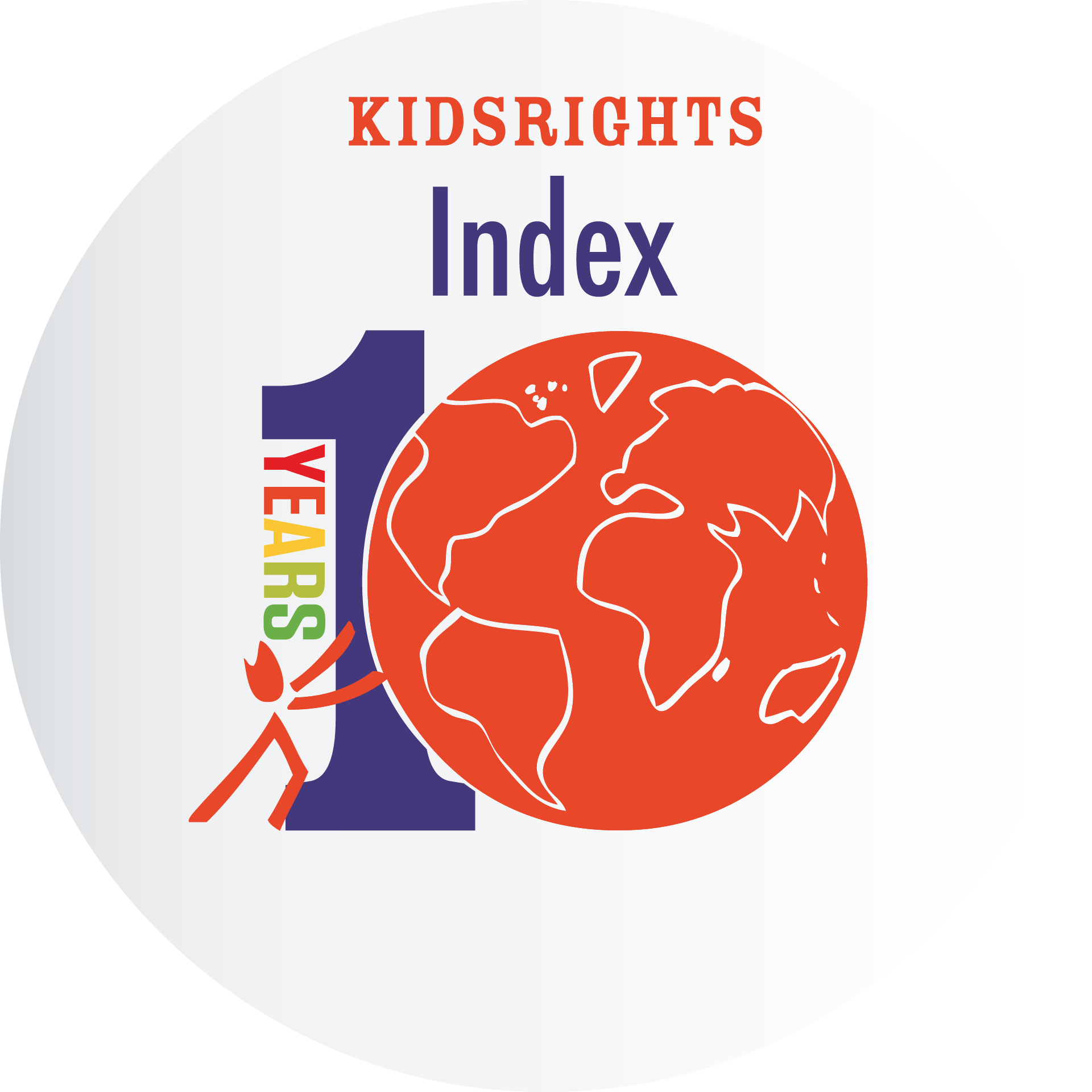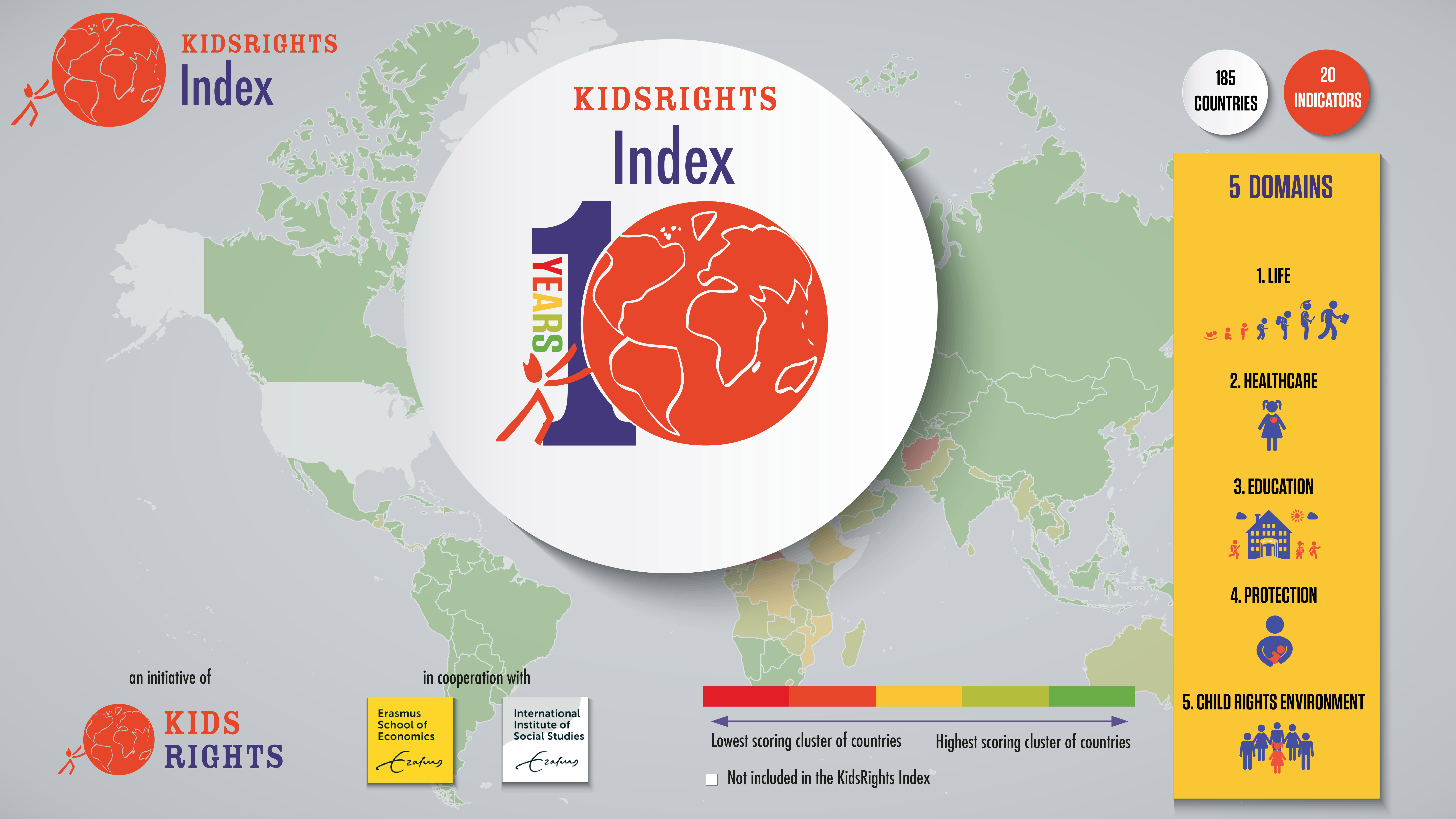A decade of monitoring children’s rights: The KidsRights Index at 10
On 19 October 2022 the tenth KidsRights Index was published. This Index is the product of a highly rewarding and longstanding collaboration between the Dutch NGO KidsRights (among other activities known for annually awarding the children’s peace prize), Erasmus School of Economics (ESE) and the International Institute of Social Studies (ISS). The work behind the scenes of the Index is performed by Professor Karin Arts, in recent years supported by PhD researcher Ekaterina Evdokimova (ISS); Professors Dinand Webbink and Philp Hans Franses (ESE); and Chairman of KidsRights, Marc Dullaert, supported by Jolanda Beerse.
A decade of monitoring children’s rights: The KidsRights Index at 10
The principles of the KidsRights Index
The Index is the tangible result of the desire of the three collaborating organizations to put science at the service of achieving societal impact in the realm of children’s rights. Thus, KidsRights, ESE and ISS jointly decided to design an instrument to measure, compare and publish the children’s rights records of as many countries as data allow for. Deliberate decisions were made to do this in a fully child rights-based manner, to aim at maximum country coverage and comparability, to use the best available existing data, and to make the outcomes and the underlying data and methodology available through an open access website so that they can be easily consulted by anyone interested.

Infographic 10 years KidsRights Index
Five child rights-based domains
Given the nearly universal ratification of the UN Convention on the Rights of the Child (CRC), we also purposefully decided to give a central place to that Convention. We checked which elements of the CRC quality data exist that allow for an equal level comparison between (nearly) all states in the word. This resulted in the compilation of five Domains that measure respectively the children’s rights to life, health, education and protection, and the enabling environment or ‘infrastructure’ that a state must have in place for it to be able to pursue those rights in practice. The latter consists of the combination of respect for the general principles of the Convention on the Rights of the Child (non-discrimination, the best interests of the child and child participation), legislation, mobilizing the state’s best available budget/resources, data and state-civil society collaboration. The country scores on Domain 5 are entirely based on the periodical country assessments issued by the Committee on the Rights of the Child, the UN treaty body that monitors compliance with the CRC.
Using existing data and exposing gaps therein
Rather than generating data ourselves, the KidsRights Index team makes use of data available from UNICEF, UNDP, UNESCO and the UN Committee on the Rights of the Child. These amount to the best globally available, highest quality and most comparable data on the elements measured by the Index. Obviously, in an ideal world, we would be able to cover many more dimensions of children’s lives in the KidsRights Index. For instance, we know that in all countries in the world violence against children occurs and that children with disabilities lack the treatment they are entitled to. However, the current state of available data on these topics is not yet at the level required for their inclusion in the Index. By continuing to draw attention to the gaps in the globally available data on children and their rights, the KidsRights Index team seeks to contribute to an improvement of this situation.
The first version of the KidsRights Index was published in 2013 and covered 168 countries. The 2022 version reported on 185 countries. This means that currently ‘only’ twelve countries remain that cannot be covered in the Index. These are:
- the USA, the only state in the world that has not yet ratified the CRC and therefore does not have any data for Domain 5;
- the four small island states Cook Islands, Marshall Islands, Niue and Tuvalu;
- Somalia and South Sudan;
- the four mini-states Andorra, Liechtenstein, Holy See and Monaco;
- and the Caribbean small island state of Dominica.
A global country ranking triggers attention
The KidsRights Index provides an annual ranking of all states covered. Their total score and ranking is calculated as the geometric mean of the scores on the five specific Domains. This makes it more difficult to compensate for low scores on specific Domains. This is justified by the argument that such a compensation is not desirable, because all the children’s rights aspects covered are considered equally important. Therefore, an extremely low score in one area of children’s rights, for example on providing an enabling environment for children’s rights, cannot be compensated by a high score, for instance, on education. In the event that too many values are missing, a Domain score is not calculated to avoid distortion of the results.
Publishing a country ranking has turned out to be an extremely powerful way to generate publicity and arouse curiosity among a wide range of actors who can make a difference for children’s rights. These actors include governments, children’s rights and development NGOs, (Children’s) Ombudsmen, members of parliament, journalists, educators, social workers and the UN Committee on the Rights of the Child. The KidsRights Index team is grateful for all the exposure the Index has had in its first decade and how this has helped to trigger necessary discussions on how to do better on children’s rights, both in the global North and in the global South.
Actually, the Index reflects a core principle of the CRC: that of contextual interpretation of child rights implementation records. In a nutshell, this entails that countries that are best equipped (e.g. because of their development level or availability of resources) are expected to also do best in realizing the Convention.[1] This clarifies why some ‘developed’ states, such as the United Kingdom or New Zealand which, according to the Committee on the Rights of the Child seriously underperformed in relation to their implementation capacity, rank much lower than many people would expect (respectively 174 and 171 in 2022). On the other hand, in 2022 Thailand ranks overall 13th, Cuba 19th and Kazakhstan 20th.
Adding a (sub-)Domain on climate change?
Through the years we have refined our methodology which has strengthened the quality and reliability of the KidsRights Index. It is likely that the Index will always remain work in progress. For the immediate future, as announced in the 2022 KidsRights Index Report,[2] we see the phenomenon of climate change as one of the most serious threats to children and their rights. According to UNICEF figures, at present already more than a third of the world’s children (820 million) are highly exposed to heatwaves, while more than one in six (400 million) children are exposed to cyclones. Close to 90% of all children across the globe are also subjected to air pollution. With climate change intensifying, this situation is likely to exacerbate in the years and decades to come. In the next phase of our work, we will therefore explore whether we can a add a new (sub-)Domain on climate change and children into the KidsRights Index.
[1] For details see Karin Arts, ‘Twenty-Five Years of the United Nations Convention on the Rights of the Child: Achievements and Challenges’, LXI Netherlands International Law Review no. 3, 2014, pp. 267-303.
[2] Ibid. (note 1), p. 25.
For further details
If you are interested in further details, please check out the 2022 KidsRights Index Report and/or the KidsRights Index web resources.
A decade of monitoring children’s rights: The KidsRights Index at 10

Karin Arts is professor in International Law and Development and Deputy Rector Education Affairs at ISS. She is the main author of the 2022 KidsRights Index


